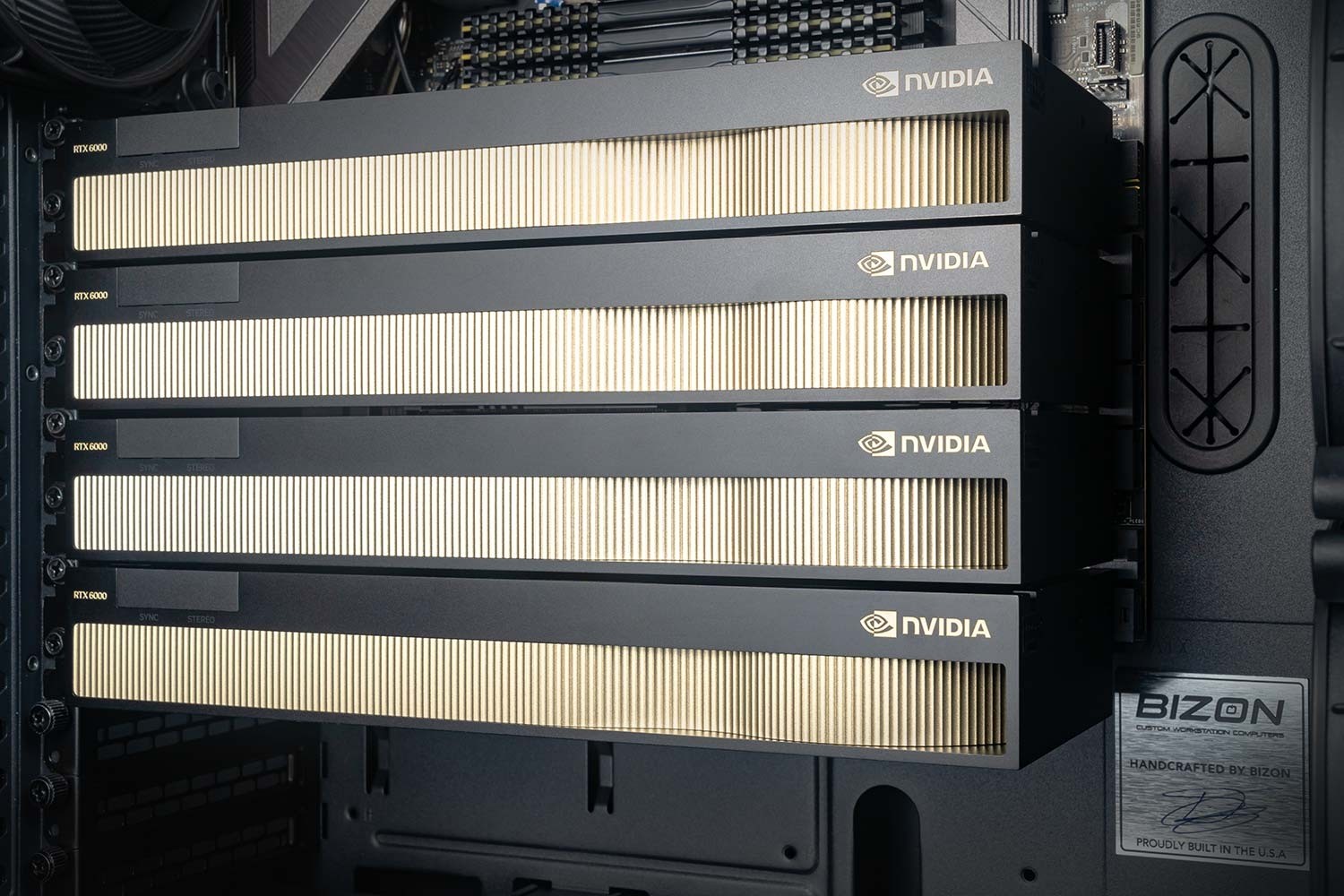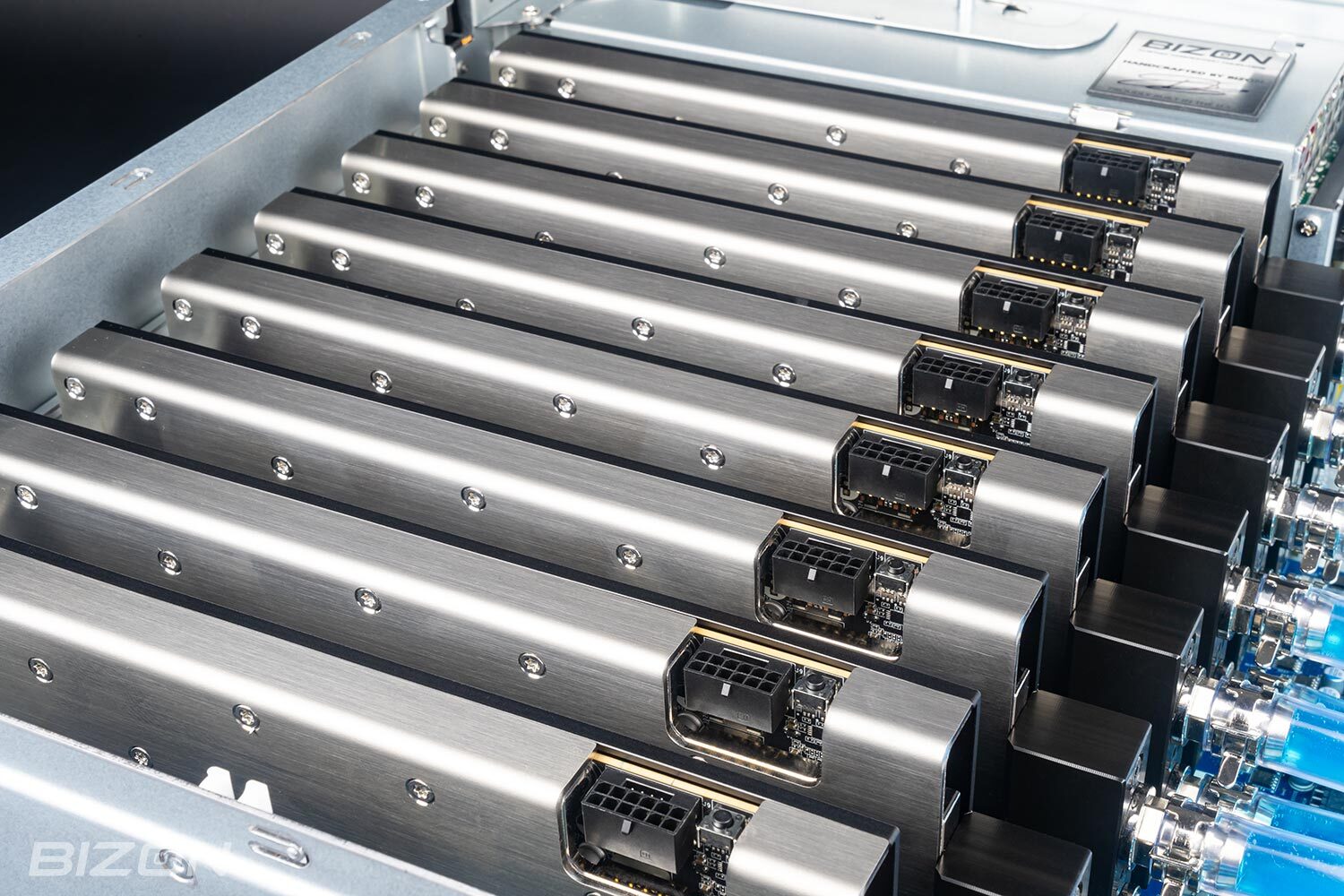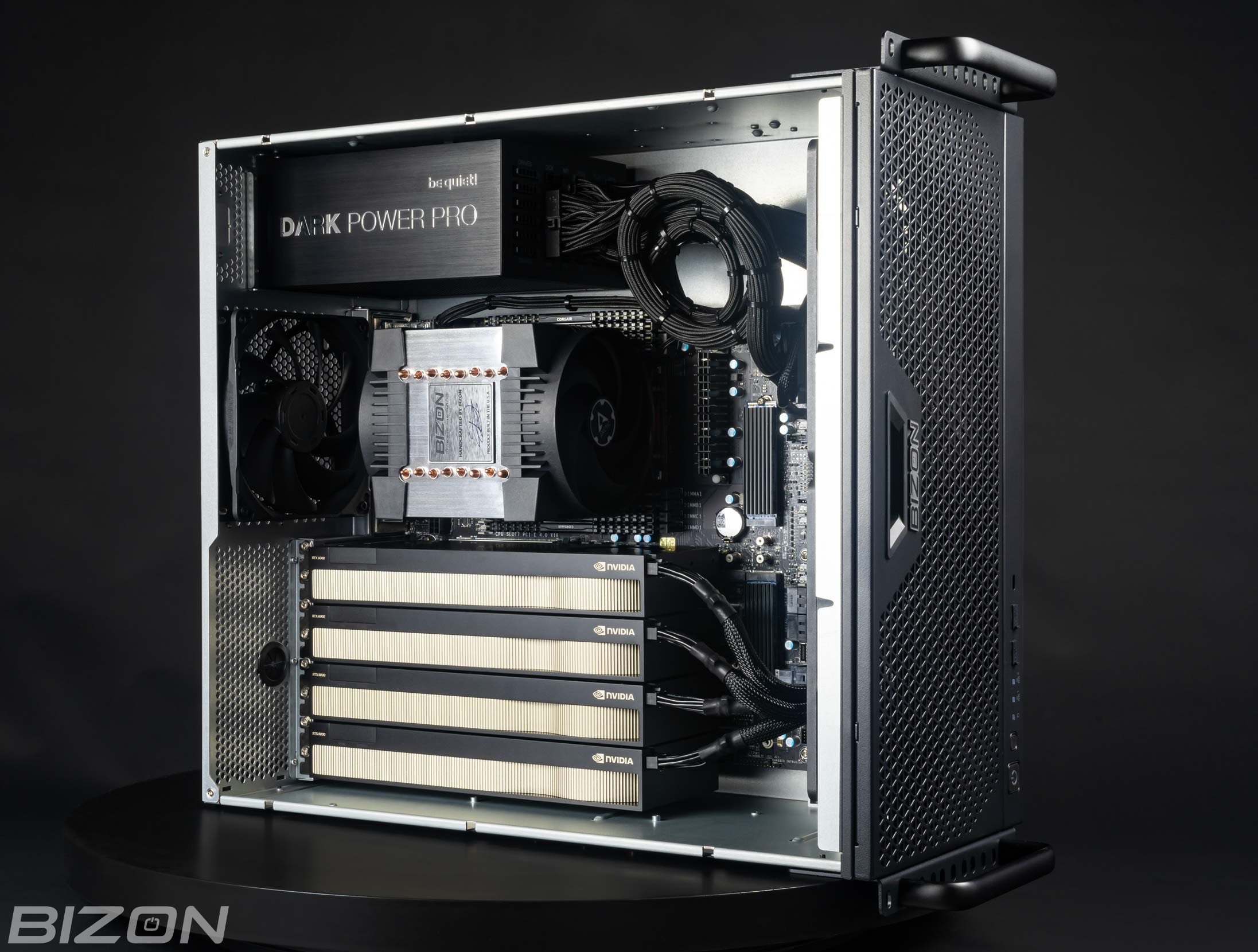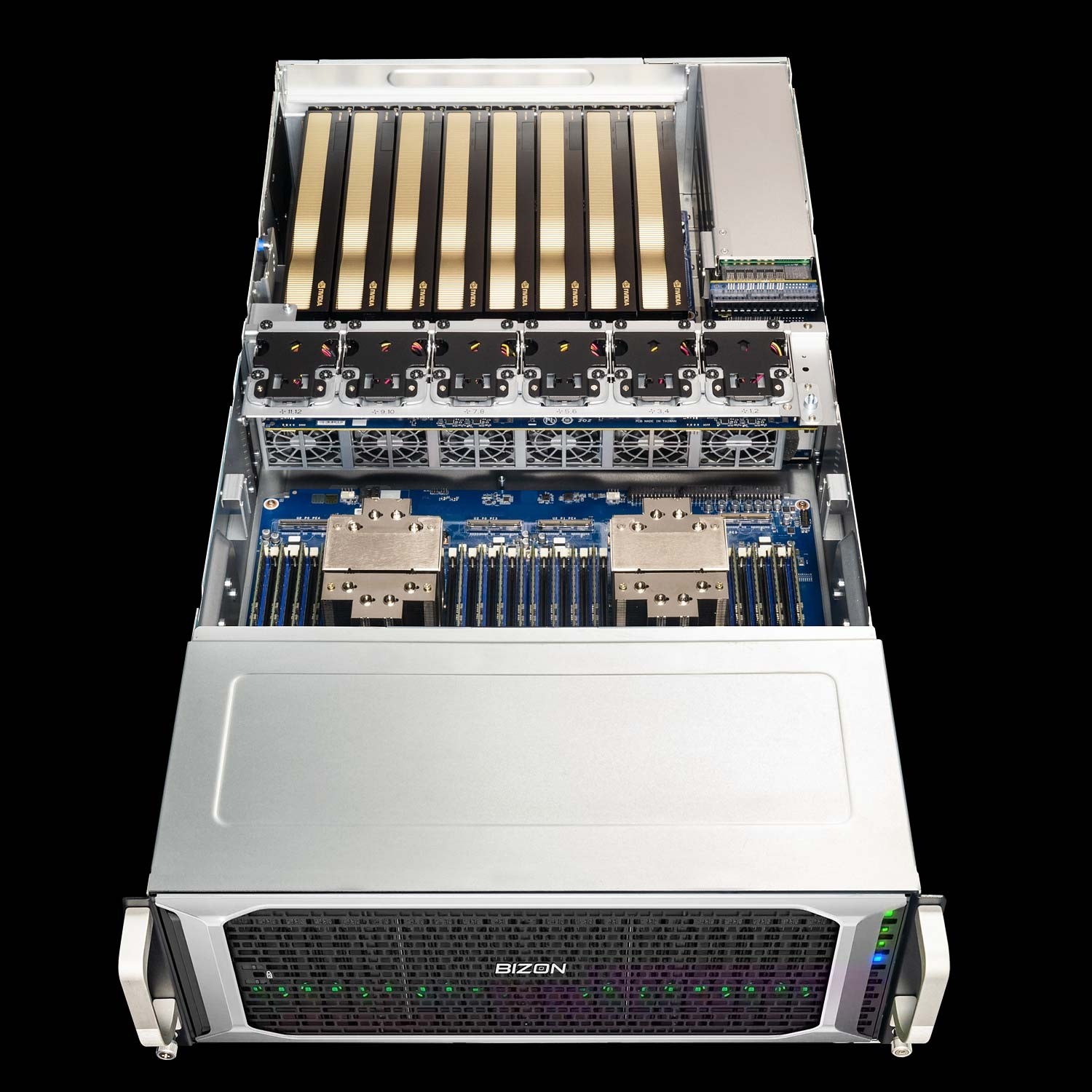Table of Contents
The Best GPU for Molecular Dynamics: A Comprehensive Guide 2025 [ Updated ]
Introduction
Molecular dynamics (MD) is a crucial aspect of computational chemistry, allowing scientists to explore the physical movements of atoms and molecules. This field finds applications in drug discovery, material science, and biophysics, requiring immense computational power for extensive simulations. Graphics Processing Units (GPUs) have revolutionized MD by offering unparalleled computational capabilities.
In this article, we will delve into the best GPUs for molecular dynamics in 2024, focusing on their specific applications and why they excel in those areas. We will also provide a brief overview of Bizon MD workstations, highlighting their GPU configurations and why they are ideal for molecular dynamics research.
Top GPUs for Molecular Dynamics
NVIDIA RTX A6000 ADA

The NVIDIA RTX A6000 ADA is a powerhouse designed for high-performance computing. Its architecture and capabilities make it ideal for a variety of molecular dynamics applications.
- High Memory Capacity: With 48GB of GDDR6 memory, the RTX A6000 can handle large molecular systems and complex simulations.
- Exceptional Parallel Processing: 10,752 CUDA cores provide exceptional parallel processing capabilities, speeding up simulations significantly.
- Tensor Cores: The presence of Tensor Cores enhances AI and machine learning tasks, which are increasingly integrated with molecular dynamics simulations for predictive modeling.
Applications: The RTX A6000 ADA is well-suited for drug discovery, where large datasets and complex molecular interactions need to be modeled accurately and efficiently. In drug discovery, researchers often need to simulate the interactions of thousands of compounds with target proteins. The RTX A6000's large memory capacity ensures that these simulations can be run without memory bottlenecks, while its CUDA cores deliver the parallel processing power needed to handle numerous simultaneous calculations.
NVIDIA A100 Tensor Core GPU
The NVIDIA A100 is designed for the most demanding computational workloads, including molecular dynamics.
- High Memory Bandwidth: Offering up to 1.6TB/s memory bandwidth, the A100 ensures rapid data transfer, crucial for handling extensive simulations.
- Scalable Performance: With Multi-Instance GPU (MIG) technology, the A100 can be partitioned into seven independent instances, allowing for versatile usage in multi-user environments.
- Advanced Compute Capability: The A100 features 6,912 CUDA cores and 432 Tensor Cores, delivering superior performance for both FP64 and FP32 workloads.
Applications: The A100 excels in protein folding simulations, where high precision and fast computation are critical to understanding the folding pathways and intermediate structures. Protein folding is a complex process that requires the simulation of the movements of atoms within a protein over time. The A100's high memory bandwidth and extensive CUDA and Tensor Cores ensure that these simulations can be run efficiently, providing researchers with the detailed data needed to understand protein structures and functions.
NVIDIA RTX 4090

The NVIDIA RTX 4090 is the latest in the RTX series, offering cutting-edge performance for molecular dynamics.
- Ample Memory: With 24GB of GDDR6X memory, the RTX 4090 can handle intricate simulations involving numerous particles.
- Superior Processing Power: Featuring over 16,000 CUDA cores, the RTX 4090 provides exceptional computational throughput.
- Enhanced AI Performance: Tensor Cores in the RTX 4090 facilitate accelerated AI-driven molecular simulations and predictive analytics.
Applications: The RTX 4090 is particularly effective in material science applications, where simulations of new materials at the atomic level require high computational power and memory. In material science, researchers use molecular dynamics to predict the properties of new materials under different conditions. The RTX 4090's superior processing power allows for the simulation of complex materials and the prediction of their behaviors with high accuracy, making it a valuable tool for material scientists.
Bizon Workstations for Molecular Dynamics
Bizon workstations integrate these powerful GPUs into systems designed for maximum performance and reliability in molecular dynamics research. Here are some key models:
Bizon X5500 MD Workstation

- High GPU Density: Supports up to four NVIDIA RTX A6000 GPUs.
- Advanced Cooling: Robust cooling system for stable performance.
- Scalability: Highly scalable to meet growing computational needs.
Ideal For: Large-scale simulations requiring extensive parallel processing, such as drug discovery and material science. The X5500's ability to support up to four RTX A6000 GPUs makes it a formidable choice for researchers needing to run multiple large-scale simulations simultaneously. Its advanced cooling system ensures that the GPUs operate efficiently, even under heavy loads, maintaining consistent performance.
Bizon G7000 (8x GPU MD Server)

- Exceptional Performance: Can be equipped with up to 8 GPUs
- High Memory Bandwidth: Crucial for handling large datasets.
- Custom Liquid Cooling: Maintains optimal temperatures under maximum load.
- High GPU Capacity: Supports up to eight GPUs.
Ideal For: Intensive computational tasks like protein folding and large biomolecular simulations. The G7000's support for up to eight A100 GPUs makes it an excellent choice for research groups needing maximum computational power. Its robust design and high configurability make it suitable for a wide range of applications, from simulating new materials to studying complex biological systems.
Bizon Z9000 (8x GPU MD Server)

- Robust Design: Ensures long-term reliability and performance.
- Versatility: Configurable to meet a wide range of computational needs.
- High GPU Capacity: Supports up to eight GPUs.
Ideal For: Versatile applications in molecular dynamics, including complex material science simulations and biophysics research. The Z9000 G2's ability to support up to eight RTX 4090 GPUs makes it one of the most powerful workstations available. Its custom liquid cooling system option ensures that the GPUs can sustain high performance over extended periods, making it ideal for long-running simulations.
Advanced Applications in Molecular Dynamics
Drug Discovery
In drug discovery, molecular dynamics simulations are used to model the interactions between drug candidates and their target molecules. The ability to simulate these interactions accurately and quickly can significantly accelerate the drug development process. Bizon workstations, such as the X5500 and G7000, provide the computational power necessary to handle these complex simulations, allowing researchers to explore a vast chemical space efficiently. The GPUs' high memory capacity and parallel processing capabilities ensure that large datasets can be processed quickly, leading to faster identification of promising drug candidates.
Protein Folding
Understanding protein folding is crucial for numerous biological and medical applications. Molecular dynamics simulations can provide insights into the folding pathways and intermediate structures of proteins. The high memory bandwidth and computational power of the Bizon G7000 and Z9000 G2 workstations enable researchers to perform these simulations with high accuracy and speed. The A100 GPUs in these workstations are particularly suited for protein folding simulations due to their ability to handle large-scale computations and their high memory bandwidth, which allows for efficient data transfer during simulations.
Material Science
Molecular dynamics is also used in material science to study the properties of new materials at the atomic level. This includes simulating the behavior of materials under different conditions, which can lead to the discovery of new materials with desirable properties. The scalability and high performance of Bizon workstations make them ideal for conducting extensive simulations in this field. The verstaile GPU options in the Z9000 G2 provide the computational power needed to simulate complex materials and predict their behaviors, helping researchers develop new materials with specific characteristics.
Biophysics
In biophysics, molecular dynamics simulations help researchers understand the physical basis of biological phenomena. This includes studying the dynamics of biomolecules, such as DNA, RNA, and lipids, in various environments. The advanced cooling systems and robust design of Bizon workstations ensure that these long and complex simulations can be performed without interruption. The high computational power and memory capacity of the GPUs in these workstations enable researchers to run detailed simulations that provide insights into the structure and function of biological molecules.
Conclusion
Choosing the right hardware for molecular dynamics is crucial for achieving efficient and accurate simulations. The right GPU can significantly accelerate computational tasks, handle larger datasets, and improve the overall quality of simulations. NVIDIA's RTX A6000, A100 Tensor Core, and RTX 4090 GPUs each offer unique advantages tailored to different aspects of molecular dynamics research.
Bizon workstations, with their optimized configurations and robust designs, provide the perfect platform for leveraging these GPUs' capabilities. The Bizon X5500, with its support for up to four RTX A6000 GPUs, is ideal for drug discovery and material science.
The Bizon G7000, supporting up to eight GPUs, excels in protein folding and large biomolecular simulations. Finally, the Bizon Z9000 G2, supporting up to eight watercooled A100s, is perfect for versatile applications in material science and biophysics research.
By selecting the appropriate Bizon workstation and GPU configuration, researchers can accelerate their discoveries, improve simulation accuracy, and tackle more complex problems, ultimately advancing the field of molecular dynamics. Investing in a high-performance Bizon workstation equipped with the latest GPUs is a strategic decision that can significantly enhance research productivity and impact. As molecular dynamics continues to evolve, the integration of cutting-edge GPUs and powerful workstations will remain crucial for driving innovation and uncovering new scientific insights.
Whether you are involved in drug discovery, protein folding, material science, or biophysics, selecting the right Bizon workstation is a pivotal step in ensuring that your simulations run efficiently and produce accurate results. Bizon's range of workstations, coupled with the latest NVIDIA GPUs, offers a powerful solution for researchers aiming to push the boundaries of molecular dynamics and achieve breakthroughs in their respective fields.